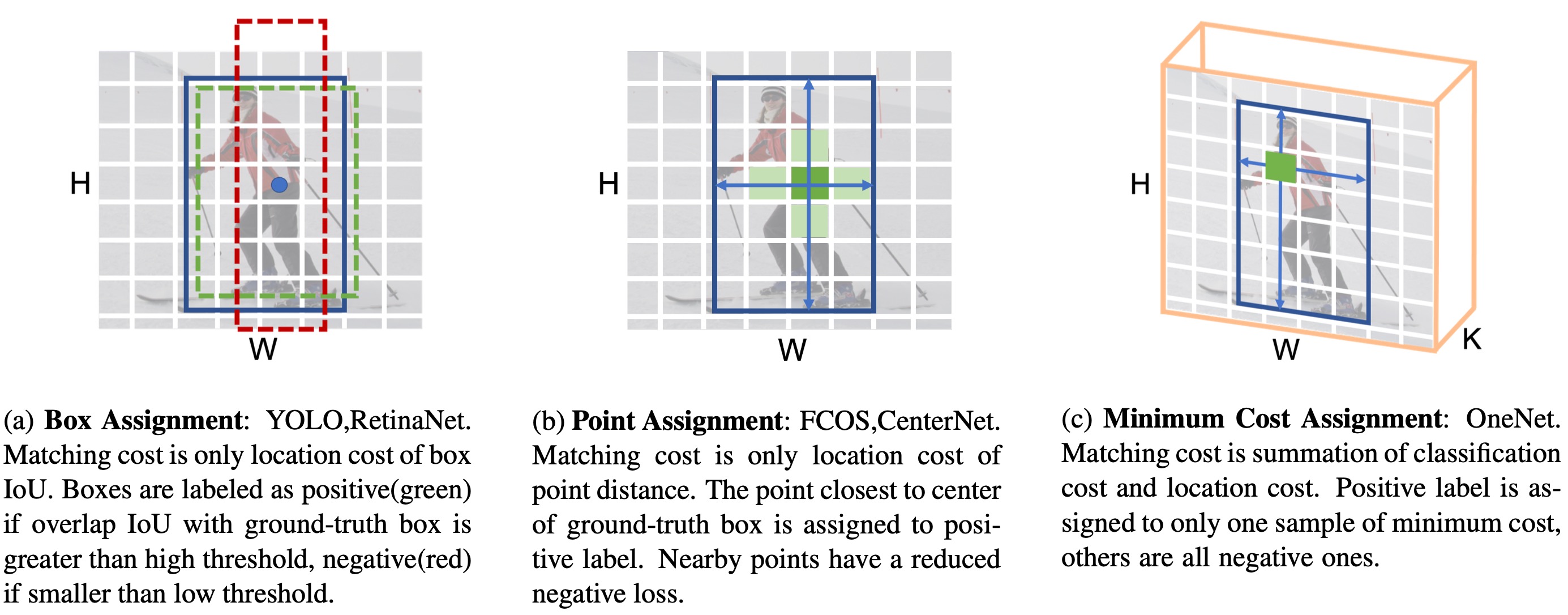What Makes for End-to-End Object Detection?
Object detection has recently achieved a breakthrough for removing the last one non-differentiable component in the pipeline, Non-Maximum Suppression (NMS), and building up an end-to-end system. However, what makes for its one-to-one prediction has not been well understood. In this paper, we first point out that one-to-one positive sample assignment is the key factor, while, one-to-many assignment in previous detectors causes redundant predictions in inference. Second, we surprisingly find that even training with one-to-one assignment, previous detectors still produce redundant predictions. We identify that classification cost in matching cost is the main ingredient: (1) previous detectors only consider location cost, (2) by additionally introducing classification cost, previous detectors immediately produce one-to-one prediction during inference. We introduce the concept of score gap to explore the effect of matching cost. Classification cost enlarges the score gap by choosing positive samples as those of highest score in the training iteration and reducing noisy positive samples brought by only location cost. Finally, we demonstrate the advantages of end-to-end object detection on crowded scenes. The code is available at: \url{https://github.com/PeizeSun/OneNet}.
PDF Abstract




 ssd
ssd
 CrowdHuman
CrowdHuman